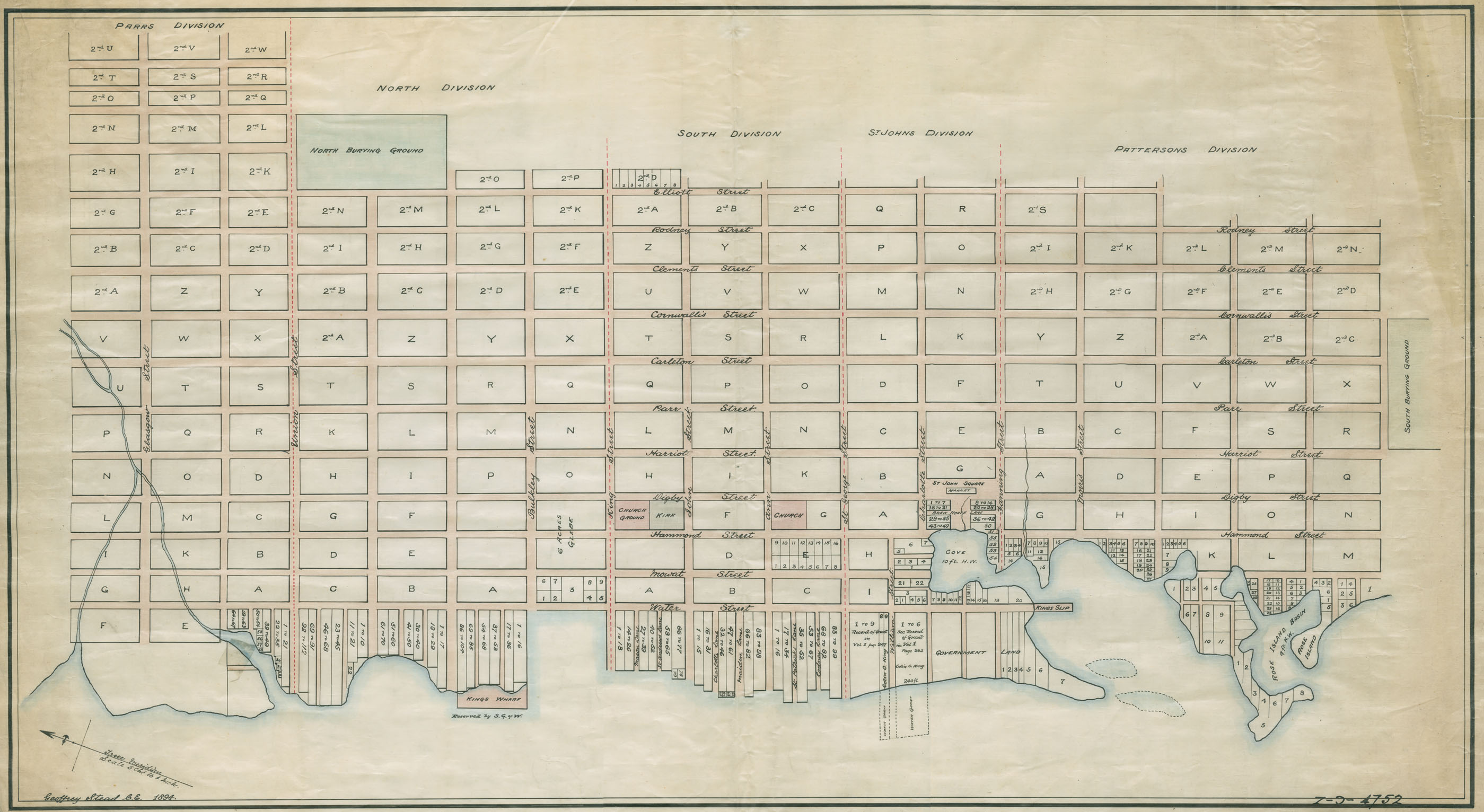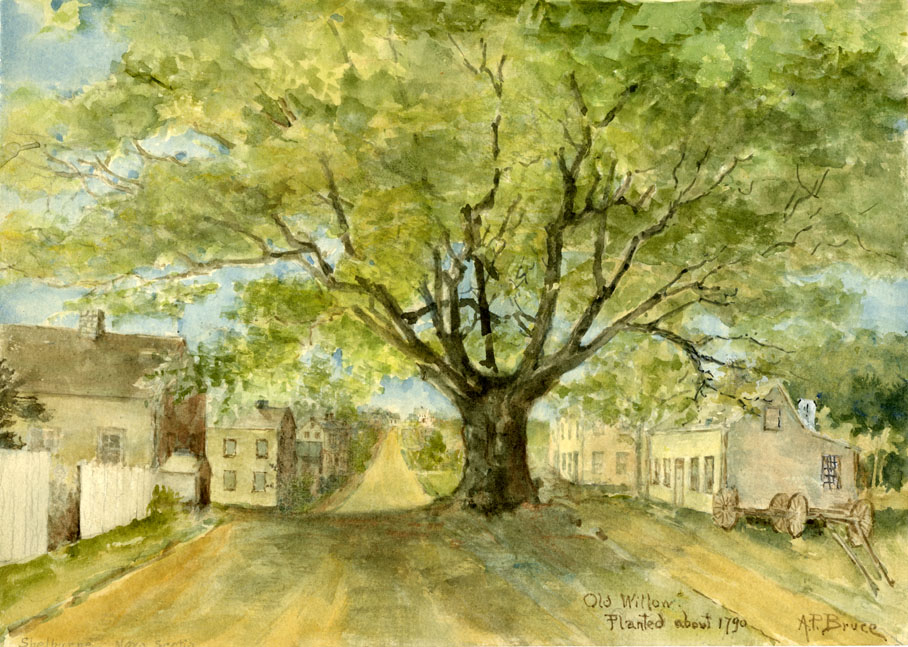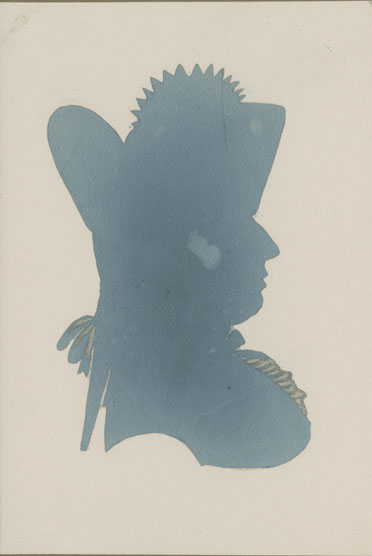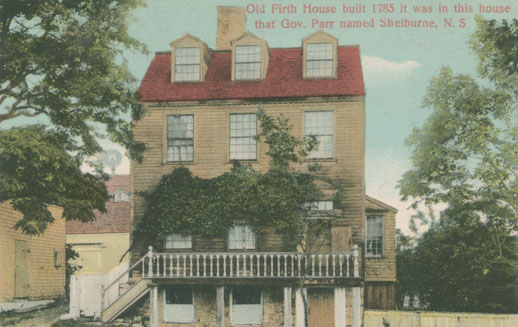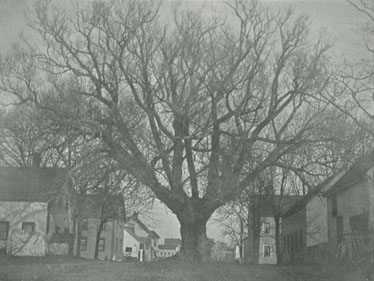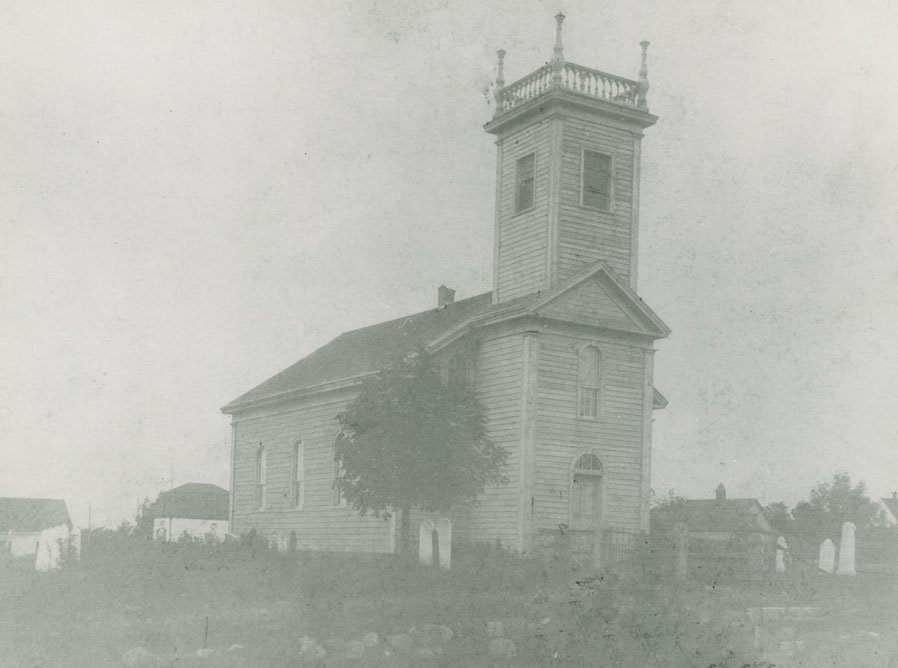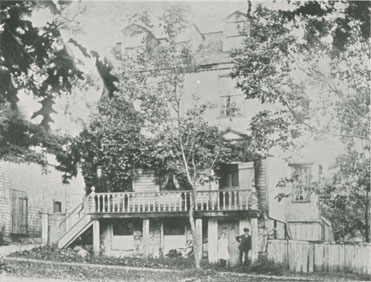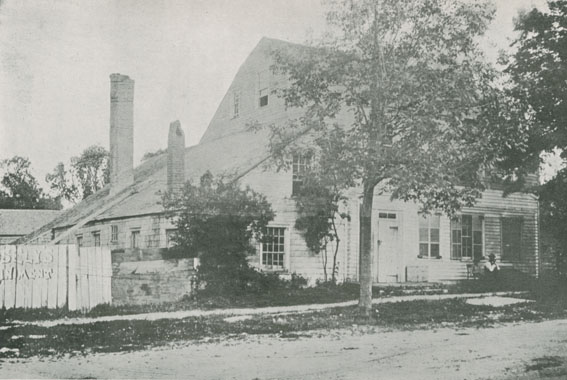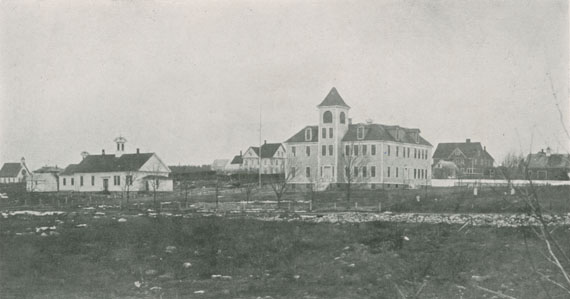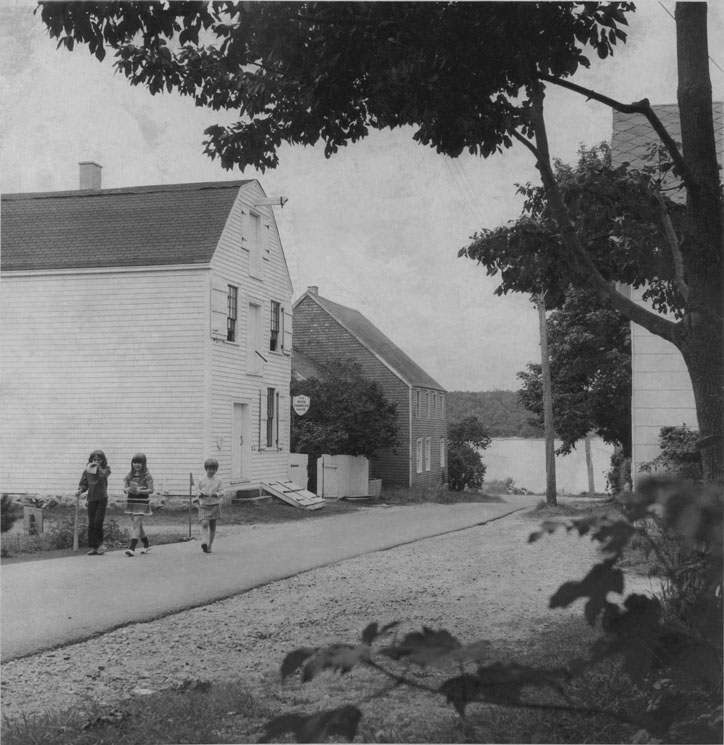Nova Scotia Archives
Gideon White Family Papers
The virtual exhibit presented here re-creates, through archival photographs, documentary art and early maps, the town of Shelburne that Gideon White and his family knew and helped to build. A little historical background may help in exploring this visual reminder of Loyalist Shelburne...
When General Earl Cornwallis surrendered to the American forces after the Battle of Yorktown, Virginia, in October 1781, the handwriting was on the wall, so to speak. The defeat signaled the end of the American Revolution, even though the formal peace treaty — the Treaty of Paris — was not signed until September 1783. In the meantime, a solution was needed for the thousands of military and civilian supporters ('Tories,' or 'Loyalists' as they soon came to be called) whose allegiance to Great Britain during the Revolution meant that they could no longer remain in the new republic.
Various consortiums for organized re-settlement in British territory soon emerged, including one begun in the autumn of 1782, led by a number of prominent Loyalists in New York City — the British army general headquarters while peace negotiations were underway. The 'Port Roseway Associates' was formed to attract fellow-exiles to a new wilderness community proposed for Port Roseway (now Shelburne) on the far southeast coast of Nova Scotia.
By spring 1783 the Associates had attracted some 3,000 settlers intent on starting over again in Nova Scotia. A new town was surveyed and laid out for them in April — just in time for their arrival by sea in May as part of the larger fleet which sailed out of New York, carrying thousands of Loyalists into exile. On 22 July 1783, Governor John Parr visited the new boomtown in the wilderness and officially named it 'Shelburne' in honour of his patron, the Earl of Shelburne and Prime Minister of Great Britain (1782-83).
A second fleet brought thousands more refugees to Shelburne in the autumn of 1783. The Commissary General's Office, responsible for feeding and settling everyone, counted 8,896 residents in October. The population probably peaked sometime late in 1783, when for a fleeting moment Shelburne was the fourth largest community in North America — only New York, Philadelphia and Boston were bigger. By December, Governor Parr reported upwards of 12,000 people in the community — perhaps generous, since only 8,645 were victualled there on 8 January 1784.
In the summer of 1784, a muster of Loyalists, disbanded soldiers and Black settlers counted 7,922 inhabitants — 1,521 freed slaves living in Birchtown (just outside Shelburne), 1,614 disbanded soldiers (including 72 Hessian mercenaries in nearby Argyle Township) and 4,787 Loyalist civilians. The population of Shelburne itself was 6,329.
Rapid decline followed. Government rations stopped in 1787, the same year that some 360 houses in Shelburne were reported as deserted. By 1789, two-thirds of the town was uninhabited. And in 1792 many local Blacks left, disappointed with settlement conditions and attracted away by John Clarkson and his mission to recruit settlers for the Sierra Leone Company's new colony in West Africa. Geographic isolation, poor climate and soil, a lack of regional infrastructure, and the failure to create a sustainable local economy all conspired against the boomtown.
In spite of everything, many Shelburne Loyalists remained — and some prospered. One of the most prominent was Gideon White, a merchant, shipowner, and Member of the Nova Scotia House of Assembly (1790-93). Born in Plymouth, Massachusetts, in 1754, White married Deborah Whitworth in 1787 and died in Shelburne in 1833. During the Revolution his sympathy was decidedly with the British; he served in the Duke of Cumberland's Regiment and came to Nova Scotia with thousands of other Loyalists.
Although he received land at Chedabucto (Strait of Canso) with the rest of his regiment, White decided instead to settle in Shelburne. It was a good decision. The family records which he and his children accumulated over time have survived and today provide a wealth of information on a Loyalist family living in a colonial maritime community, and interacting with a broad provincial network of like-minded refugee friends and acquaintances.
Results 1 to 20 of 20 from your search:
''Capt. Gideon White, 1754-1833, of Shelburne, N.S.''
Artist: R. Cosway
Reference: Nova Scotia Archives Photo Collection: People: White, Gideon
Plan of Shelburne
Reference: Nova Scotia Archives Map Collection: V7-1784: Shelburne
"Plan of 35 Acres of Land laid out on Point Carleton for John King & Isaac Wilkins"
Date: 20 April 1786
Reference: Nova Scotia Archives RG 20, Series C, Vol. 93, No. 43
Plan of Port Roseway Harbour
Date: 12 July 1798
Reference: A New Chart of the Coast of Nova Scotia...by Captain Holland Nova Scotia Archives Map Collection: 239-1798
''Old Willow Planted about 1790''
Artist: A.P. Bruce [Mrs. Annie Bruce]
Reference: Nova Scotia Archives Photo Collection: Marion Robertson fonds, 1995-88, No. 9
Governor John Parr (1725-1791)
Photographer: Ernest Cooke, Plymouth [England]
Reference: Nova Scotia Archives Photo Collection: People: Parr, General, Governor of Nova Scotia
''Old Firth House built 1785 it was in this house that Gov. Parr named Shelburne, N.S.''
Reference: Nova Scotia Archives Walter Deinger Collection, 1995-4, no. 57
''A Black Wood Cutter at Shelburne, Nova Scotia''
Date: 1788
Artist: W. Booth
Reference: Library and Archives of Canada, W.H. Coverdale Collection of Canadiana: C-040162.
''Church of England as it was when first built''
Reference: Nova Scotia Archives Library: F120 AC1 J12, Vol. 8
''The Old Thomson House''
Reference: Nova Scotia Archives Library: F120 AC1 J12, Vol. 8
''Old Willow. St. George Street''
Reference: Nova Scotia Archives Library: F120 AC1 J12, Vol. 8
''Old Kirk''
Reference: Nova Scotia Archives Library: F120 AC1 J12, Vol. 8
St. John’s Kirk, Shelburne
Reference: Nova Scotia Archives, Marion Robertson fonds, MG 1, Vol. 3636, folder 1
Firth House
Reference: Nova Scotia Archives Library: F120 AC1 J12, Vol. 8
''The old Cornelius White House''
Reference: Nova Scotia Archives Library: F120 AC1 J12, Vol. 8
''Old and New Academy Buildings, and Roman Catholic Church''
Reference: Nova Scotia Archives Library: F120 AC1 J12, Vol. 8
''Ross-Thomson House, Shelburne, N.S.''
Date: ca. 1958
Reference: Nova Scotia Archives Photo Collection: Places: Shelburne: Houses: Ross-Thomson House
Ross-Thomson House, Shelburne
Date: ca. 1974
Reference: Nova Scotia Archives Photo Collection: Places: Shelburne: Street Scene, #2 (Maritime Tel & Tel Collection, 1974-67)
Hand Fire Engine
Date: 1952
Reference: Nova Scotia Archives Nova Scotia Information Service no. 7109
''Old hand fire-engine presented by King George III to the town of Shelburne, Nova Scotia, in 1787''
Reference: Nova Scotia Archives Photo Collection: Places: Shelburne: Fire Engine, no. 1

